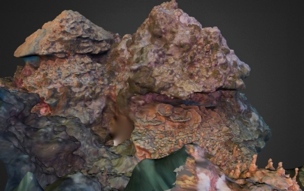Coral reefs protect shorelines by acting as a breakwater. They bring tourism, and some estimates have put their economic value at up to $350 billion a year. But they’re also disappearing pretty quickly, with more than 50% now dead due to pollution and increases in ocean temperature.
To protect these reefs, it’s vitally important to know more about them, and this means measuring them regularly to track change. Currently, scientists performing these measurements use methods so rudimentary you’d think they were estimating the sizes of dirt piles rather than delicate, complex structures. According to this article in Fast Company, they’ve been using tape measures to make estimates. As a result, their ability to track reef health is… challenged.
You can probably see where this is going. There’s a need for more precise data, and a simple 3D solution can provide that data. Enter The Hydrous, a company that has helped pioneer a method for 3D-imaging coral reefs: underwater photogrammetry.
A scuba diver (usually The Hydrous’ founder, Sly Lee) will travel to one of these reefs, and then swim around it for about half an hour snapping pictures. Then, some software from Autodesk correlates the photos and turns them into a 3D model. Classic photogrammetry.
The company hopes to make these reef models available “for science + education + open access.” Historic preservation with a naturalist angle.
Guam Coral Reef by thehydrous on Sketchfab
Click here for more coral models.
However helpful this project may be, the software to perform this underwater photogrammetry is still in development. As FastCo reports, sometimes Autodesk does the processing by hand. I knew that they had performed underwater photogrammetry during their scanning of the USS Arizona, but I didn’t know it was such a new technology.
Either way, it’s great that we’re seeing the technology bleed into new areas of application. The solution may seem obvious to us, but it’s not uncommon for one industry to find that another industry has already solved one of their biggest problems. Remember Thinkbox software, who had been efficiently processing meshes for years in the entertainment industry before they realized that architects and engineers could use the technology to generate meshes from their point clouds.
It may seem like ocean science is a little late to the party, but it’s definitely better now than never, right?






